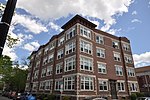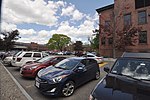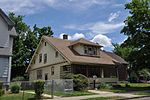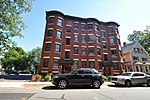St. James Apartments
1902 establishments in MassachusettsApartment buildings in Springfield, MassachusettsApartment buildings on the National Register of Historic Places in MassachusettsNational Register of Historic Places in Springfield, MassachusettsNeoclassical architecture in Massachusetts ... and 1 more
Residential buildings completed in 1902
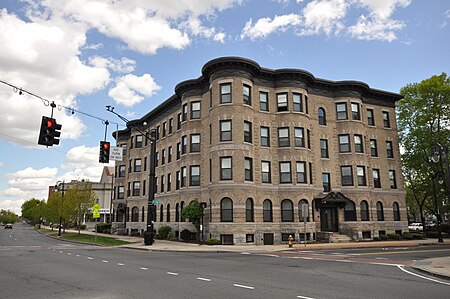
The St. James Apartments are a historic apartment house at 573 State Street & 5 Oak Street in Springfield, Massachusetts. Built in 1904, it is a good local example of Classical Revival architecture. It was listed on the National Register of Historic Places in 2020.
Excerpt from the Wikipedia article St. James Apartments (License: CC BY-SA 3.0, Authors, Images).St. James Apartments
Oak Street, Springfield
Geographical coordinates (GPS) Address Nearby Places Show on map
Geographical coordinates (GPS)
| Latitude | Longitude |
|---|---|
| N 42.109166666667 ° | E -72.574166666667 ° |
Address
Oak Street 1
01109 Springfield
Massachusetts, United States
Open on Google Maps
